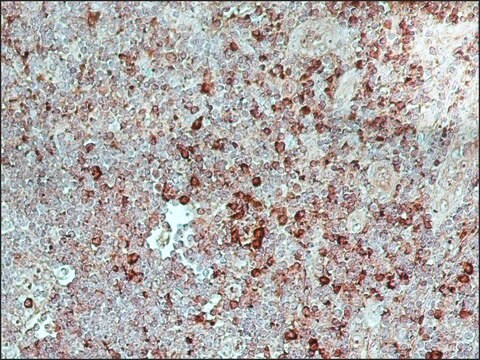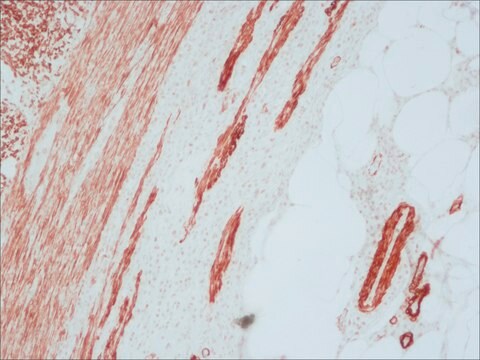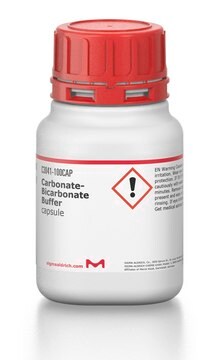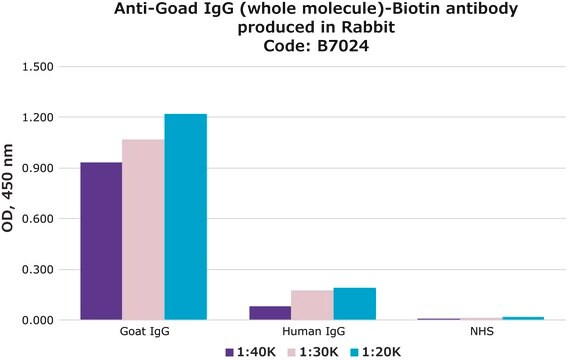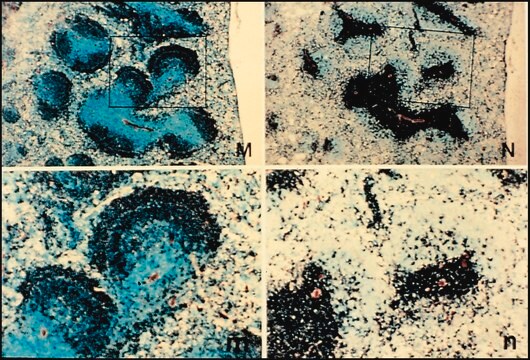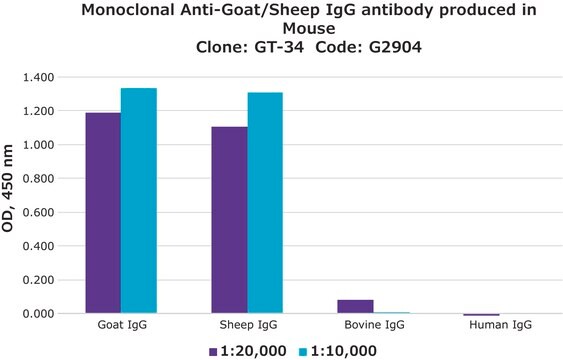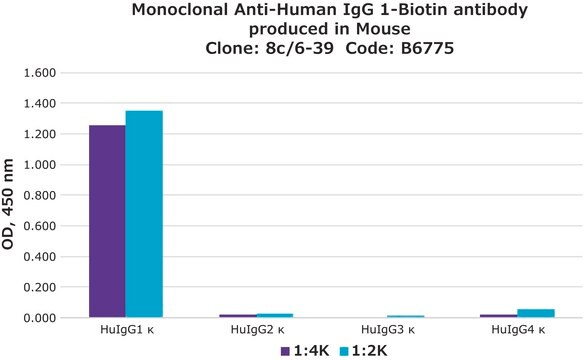B7014
Anti-Goat IgG (whole molecule)–Biotin antibody produced in rabbit
affinity isolated antibody, buffered aqueous solution
Faça loginpara ver os preços organizacionais e de contrato
About This Item
Produtos recomendados
fonte biológica
rabbit
Nível de qualidade
conjugado
biotin conjugate
forma do anticorpo
affinity isolated antibody
tipo de produto de anticorpo
secondary antibodies
clone
polyclonal
Formulário
buffered aqueous solution
técnica(s)
direct ELISA: 1:20,000
temperatura de armazenamento
−20°C
modificação pós-traducional do alvo
unmodified
Procurando produtos similares? Visita Guia de comparação de produtos
Categorias relacionadas
Descrição geral
An immunoglobulin has two heavy chain and two light chain connected by disulfide bond. It is a glycoprotein. IgG is a major class of immunoglobulin. Goat IgG has two subclasses- IgG1 and IgG2.
Goat IgG is often used for the detection and study of various proteins such as EPAS1 and MIP-3 α among several others. Anti-goat IgG (whole molecule)-Biotin antibody can be used as a secondary antibody to facilitate the detection of such target proteins bound to goat IgGs by immunological assays . Thus, anti-goat IgGs are useful tools for the analysis of target proteins. Anti-Goat IgG (whole molecule)-Biotin antibody is specific for IgG in goats.
Imunogênio
Goat IgG
Aplicação
Anti-Goat IgG (whole molecule)-Biotin antibody produced in rabbit has been used:
- immunohistochemistry
- immunostaining
- western blot
- immunofluorescence
- immunohistochemical studies
Ações bioquímicas/fisiológicas
Immunoglobulin G (IgG) participates in hypersensitivity type II and type III. It mainly helps in immune defense.
forma física
Solution in 0.01 M phosphate buffered saline, pH 7.4, containing 1% bovine serum albumin and 15 mM sodium azide
Exoneração de responsabilidade
Unless otherwise stated in our catalog or other company documentation accompanying the product(s), our products are intended for research use only and are not to be used for any other purpose, which includes but is not limited to, unauthorized commercial uses, in vitro diagnostic uses, ex vivo or in vivo therapeutic uses or any type of consumption or application to humans or animals.
Não está encontrando o produto certo?
Experimente o nosso Ferramenta de seleção de produtos.
Código de classe de armazenamento
10 - Combustible liquids
Classe de risco de água (WGK)
nwg
Escolha uma das versões mais recentes:
Já possui este produto?
Encontre a documentação dos produtos que você adquiriu recentemente na biblioteca de documentos.
Diana Borenshtein et al.
Genome biology, 9(8), R122-R122 (2008-08-06)
Comparative characterization of genome-wide transcriptional changes during infection can help elucidate the mechanisms underlying host susceptibility. In this study, transcriptional profiling of the mouse colon was carried out in two cognate lines of mice that differ in their response to
Monoclonal Antibodies: Principles and Practice (1996)
Patrick Pollard et al.
The Journal of pathology, 205(1), 41-49 (2004-12-09)
The Mendelian tumour syndromes hereditary leiomyomatosis and renal cell cancer (HLRCC) and hereditary paragangliomatosis with phaeochromocytomas (HPGL) result from mutations in nuclear genes (FH and SDHB/C/D, respectively) that encode Krebs cycle enzymes. HPGL tumours are highly vascular and there is
J F Parkinson et al.
The Journal of biological chemistry, 265(21), 12602-12610 (1990-07-25)
Thrombomodulin is an endothelial cell membrane protein which plays a central regulatory role in the protein C anticoagulant pathway. The human thrombomodulin intronless gene was isolated from a genomic DNA library and used to isolate the coding region. A mammalian
Molecular Genetics of Immunoglobulin, 17 (1987)
Nossa equipe de cientistas tem experiência em todas as áreas de pesquisa, incluindo Life Sciences, ciência de materiais, síntese química, cromatografia, química analítica e muitas outras.
Entre em contato com a assistência técnica